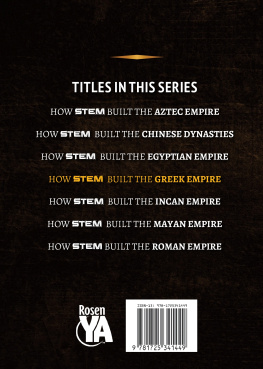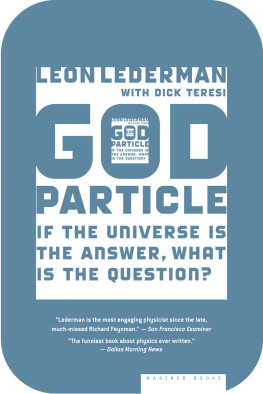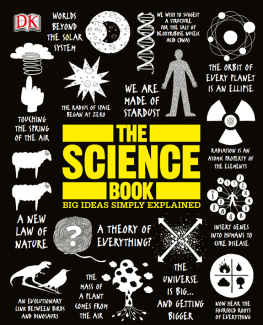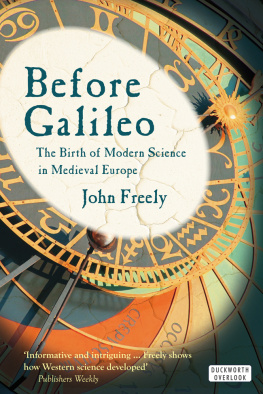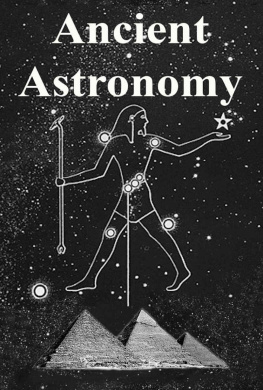
Also by Dick Teresi
Popular Mechanics Book of Bikes and Bicycling
Omnis Continuum: Dramatic Phenomena from the New Frontiers of Science
Laser: Light of a Million Uses (with Jeff Hecht)
The God Particle: If the Universe Is the Answer, What Is the Question? (with Leon Lederman)
LOST DISCOVERIES
The Ancient Roots of Modern Sciencefrom the Babylonians to the Maya
DICK TERESI
SIMON & SCHUSTER
New York London Toronto Sydney Singapore

SIMON & SCHUSTER
Rockefeller Center
1230 Avenue of the Americas
New York, NY 10020
Copyright 2002 by Dick Teresi
All rights reserved, including the right of reproduction in whole or in part in any form.
SIMON & SCHUSTER and colophon are registered trademarks of Simon & Schuster, Inc.
All drawings and charts in Chapter 2 courtesy of George Gheverghese Joseph. Copyright 1991 by George Gheverghese Joseph.
For information regarding special discounts for bulk purchases, please contact Simon & Schuster Special Sales: 1-800-456-6798 or business@simonandschuster.com
Designed by Rhea Braunstein
Manufactured in the United States of America
10 9 8 7 6 5 4 3 2 1
Library of Congress Cataloging-in-Publication Data
Teresi, Dick.
Lost discoveries: the ancient roots of modern sciencefrom the Babylonians to the Maya / Dick Teresi.
p. cm.
Includes bibliographical references and index.
1. Science, Ancient. 2. ScienceHistory I. Title.
Q124.95.T47 2002
509.3dc21 2002075457
ISBN 978-0-6848-3718-5
eISBN-13: 978-1-439-12860-2
www.SimonandSchuster.com
Board 0f Advisers

Anthony Aveni
Alfred W. Crosby
Harold Goldwhite
George Gheverghese Joseph
Robert Kaplan
David Park
George Saliba
Sheila Seaman
Barbara C. Sproul
The above scientists, mathematicians, and scholars reviewed the manuscript for scientific, mathematical, and historical accuracy Some were chosen for a non-Western, others for a Western bias. While I deferred to these advisers on factual matters, they did not always agree with my interpretation of those facts. My point of view was greatly affected by the views expressed by my advisers, but ultimately it is my own. Where practical, I have stated differing views by the board in the endnotes.
Anthony Aveni is the Russell B. Colgate Professor of Astronomy and Anthropology at Colgate University. He is the author of Conversing with the Planets: How Science and Myth Invented the Cosmos and other works of archaeoastronomy.
Alfred W. Crosby is professor emeritus of history at the University of Texas. He is the author of Ecological Imperialism: The Biological Expansion of Europe, 900-1900, among other works.
Harold Goldwhite is professor of chemistry at California State University, Los Angeles, and is the coauthor, with Cathy Cobb, of Creations of Fire: Chemistrys Lively History from Alchemy to the Atomic Age.
George Gheverghese Joseph is professor of mathematics at the University of Manchester (UK) and the author of The Crest of the Peacock: Non-European Roots of Mathematics.
Robert Kaplan has taught mathematics at a number of institutions, most recently Harvard University. He is the author of The Nothing That Is: A Natural History of Zero.
David Park is emeritus professor of physics at Williams College. He is the author of The Fire Within the Eye: A Historical Essay on the Nature and Meaning of Light.
George Saliba is professor of Arabic and Islamic science at the department of Middle East and Asian languages and cultures, Columbia University. He is the author of A History of Arabic Astronomy: Planetary Theories During the Golden Age of Islam, among other works.
Sheila J. Seaman is associate professor of geology at the University of Massachusetts at Amherst.
Barbara C. Sproul is director of the program in religion, Hunter College, City University of New York. She is the author of Primal Myths: Creation Myths Around the World and was one of the founders of the American section of Amnesty International, which won the Nobel Peace Prize in 1977.
Contents
LOST DISCOVERIES
1
 A HISTORY OF SCIENCE Rediscovered
A HISTORY OF SCIENCE RediscoveredTHE most important scientific achievement in Western history is commonly ascribed to Nicolaus Copernicus, who on his deathbed published Concerning the Revolutions of the Heavenly Spheres. Science historian Thomas Kuhn called the Polish-born astronomers accomplishment the Copernican Revolution. It represented a final break with the Middle Ages, a movement from religion to science, from dogma to enlightened secularism. What had Copernicus done to become the most important scientist of all time?
In school we learned that in the sixteenth century, Copernicus reformed the solar system, placing the sun, rather than the earth, at its center, correcting the work of the second-century Greek astronomer Ptolemy. By constructing his heliocentric system, Copernicus put up a fire wall between the West and East, between a scientific culture and those of magic and superstition.
Copernicus did more than switch the center of the solar system from the earth to the sun. The switch itself is important, but mathematically trivial. Other cultures had suggested it. Two hundred years before Pythagoras, philosophers in northern India had understood that gravitation held the solar system together, and that therefore the sun, the most massive object, had to be at its center. The ancient Greek astronomer Aristarchus of Samos had put forth a heliocentric system in the third century B.C. by A.D. 1000. Copernicuss task was greater. He had to repair the flawed mathematics of the Ptolemaic system.
Ptolemy had problems far beyond the fact that he chose the wrong body as the pivot point. On that, he was adhering to Aristotelian beliefs. A workable theory of universal gravitation had yet to be discovered. Thus hampered, Ptolemy attempted to explain mathematically what he saw from his vantage in Alexandria: various heavenly bodies moving around the earth. This presented problems.
Mars, for instance, while traveling across our sky, has the habit, like other planets, of sometimes reversing its direction. Whats happening is simple: the earth outspeeds Mars as both planets orbit the sun, like one automobile passing another. How does one explain this in a geocentric universe? Ptolemy came up with the concept of epicycles, circles on top of circles. Visualize a Ferris wheel revolving around a hub. The passenger-carrying cars are also free to rotate around axles connected to the outer perimeter of the wheel. Imagine the cars constantly rotating 360 degrees as the Ferris wheel also revolves. Viewed from the hub, a point on the car would appear to move backward on occasion while also moving forward with the motion of the wheel.
Ptolemy set the upper planets in a series of spheres, the most important of which was the deferent sphere, which carried the epicycle. This sphere was not concentric with the center of the earth. It moved at a uniform speed, but that speed was not measured around its own center, nor around the center of the earth, but around a point that Ptolemy called the center of the equalizer of motion, later to be called the equant. This point was the same distance from the center of the deferent as the distance of the deferents center from the earth, but in the opposite direction. The result was a sphere that moved uniformly around an axis that passed not through its own center but, rather, through the equant.
Next page


